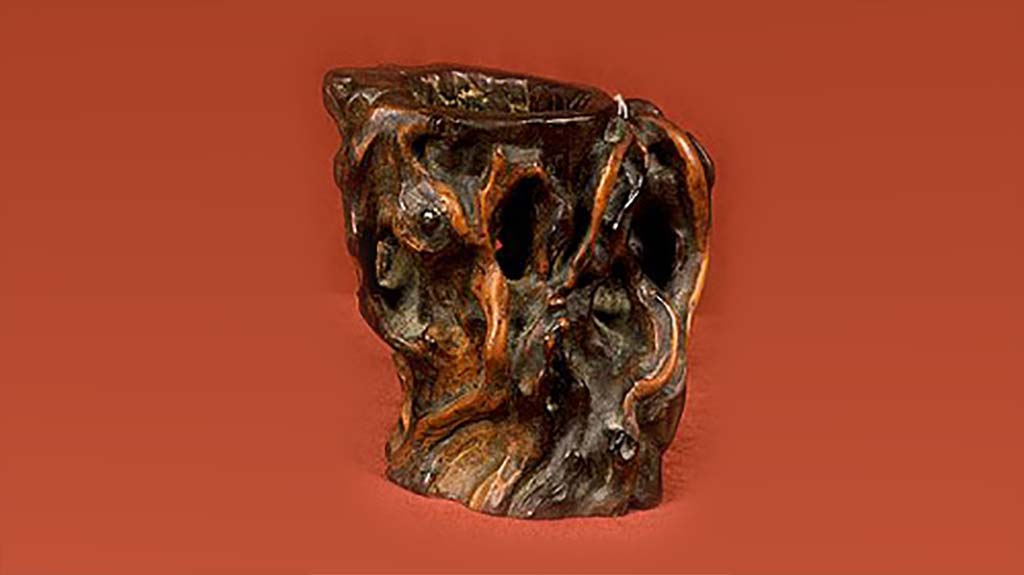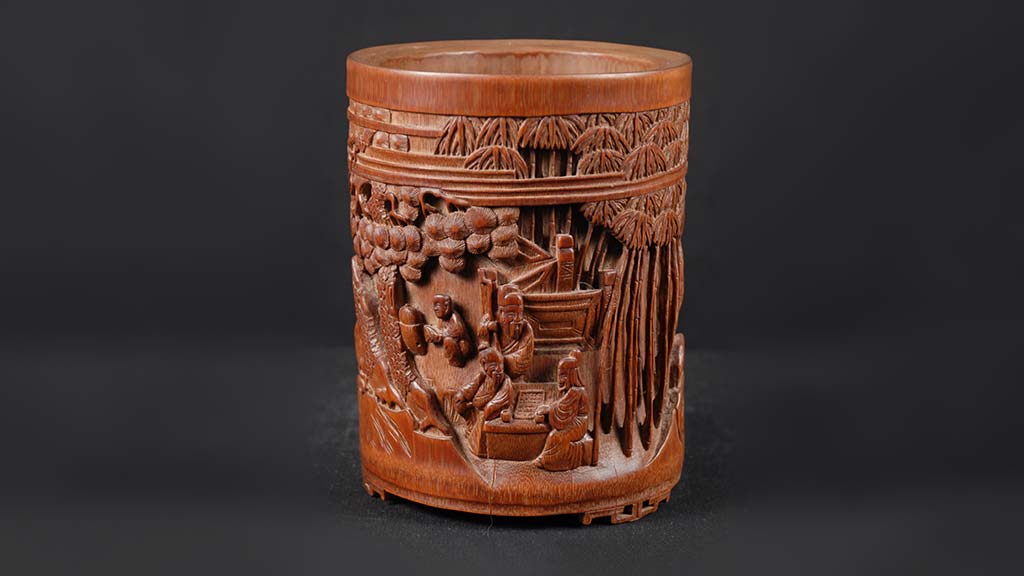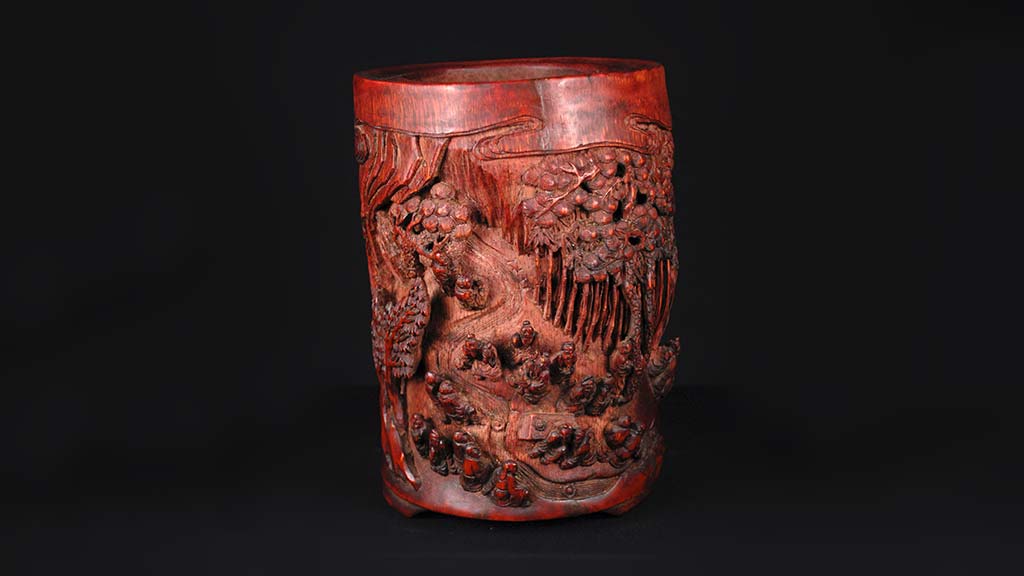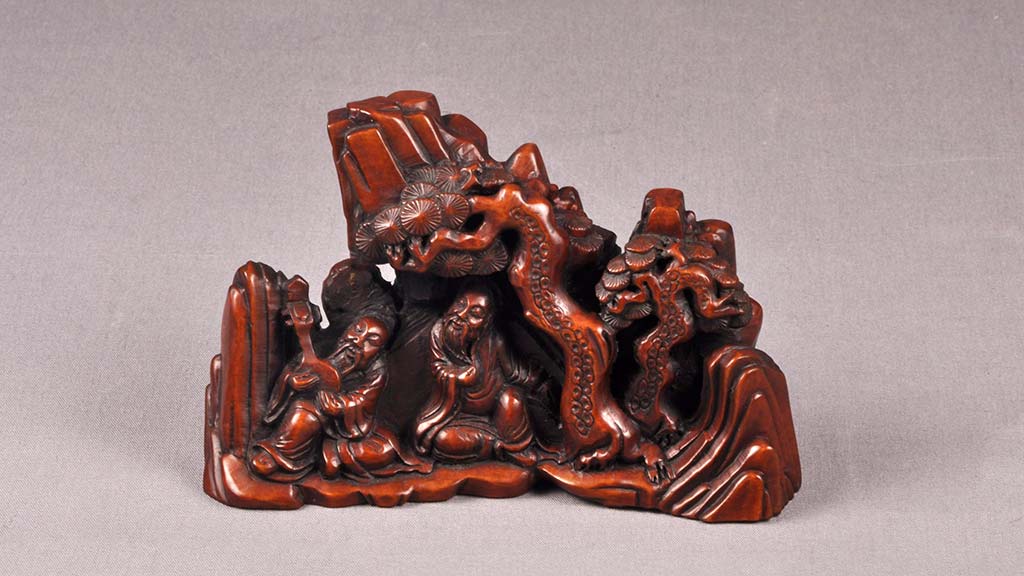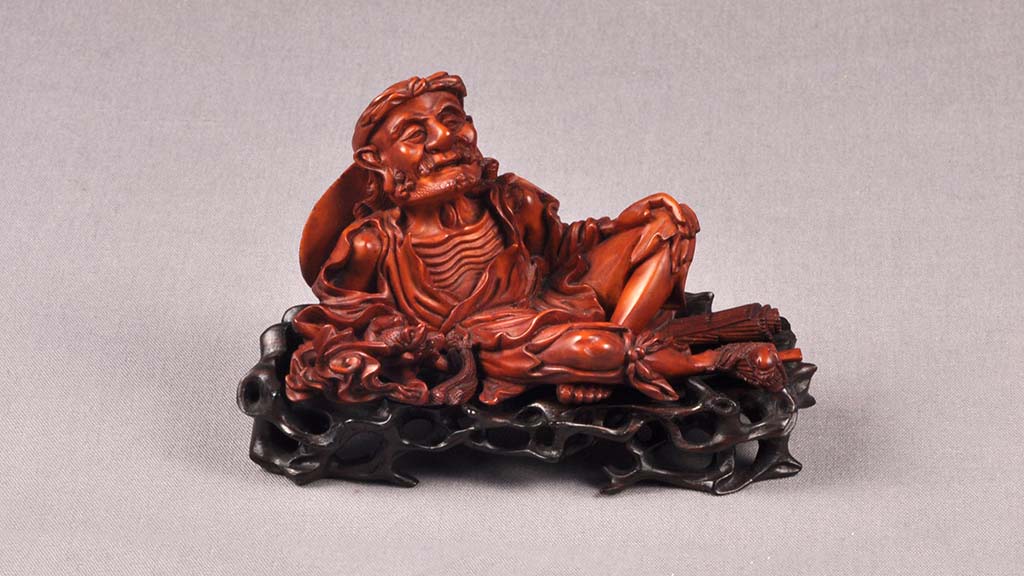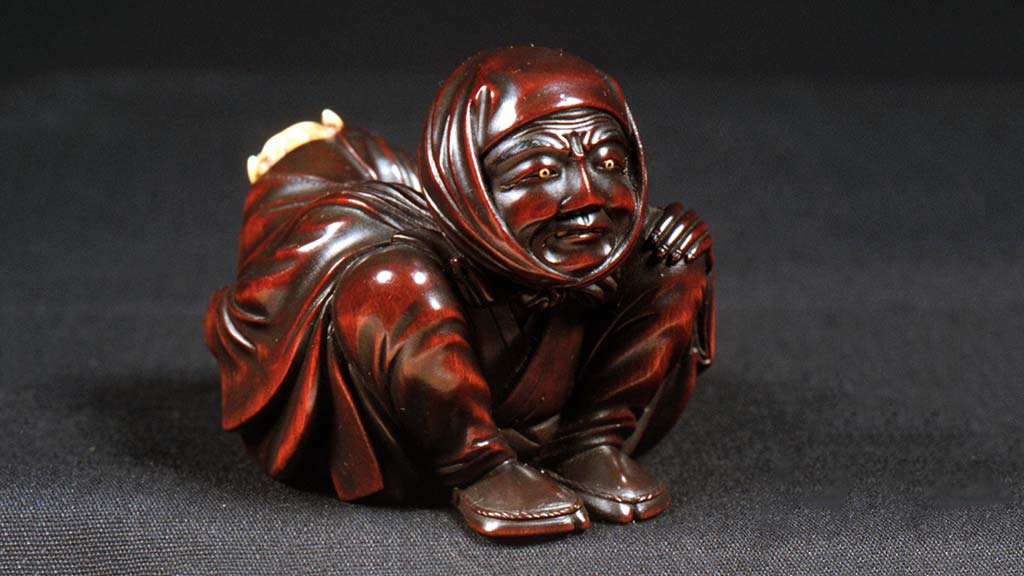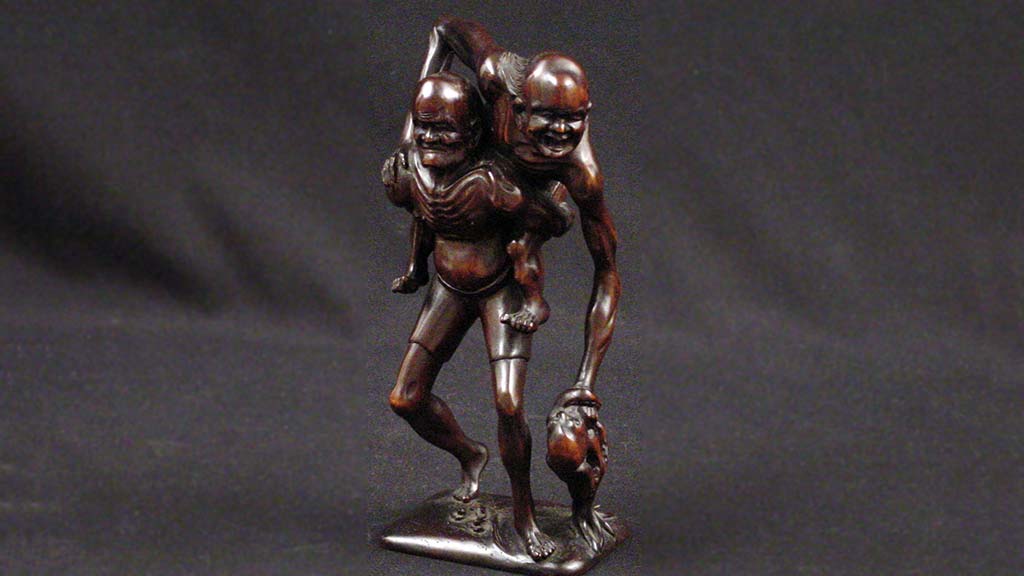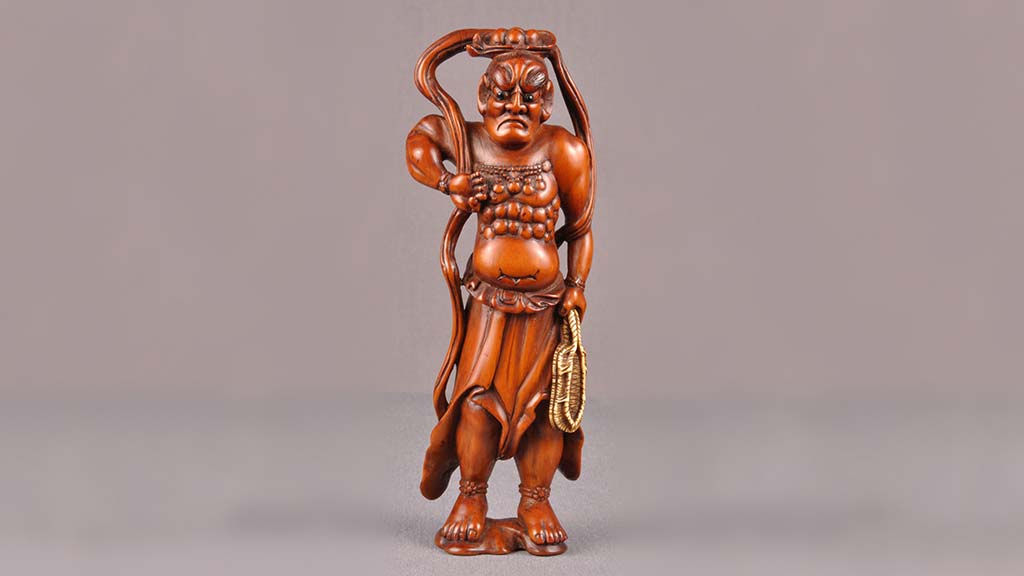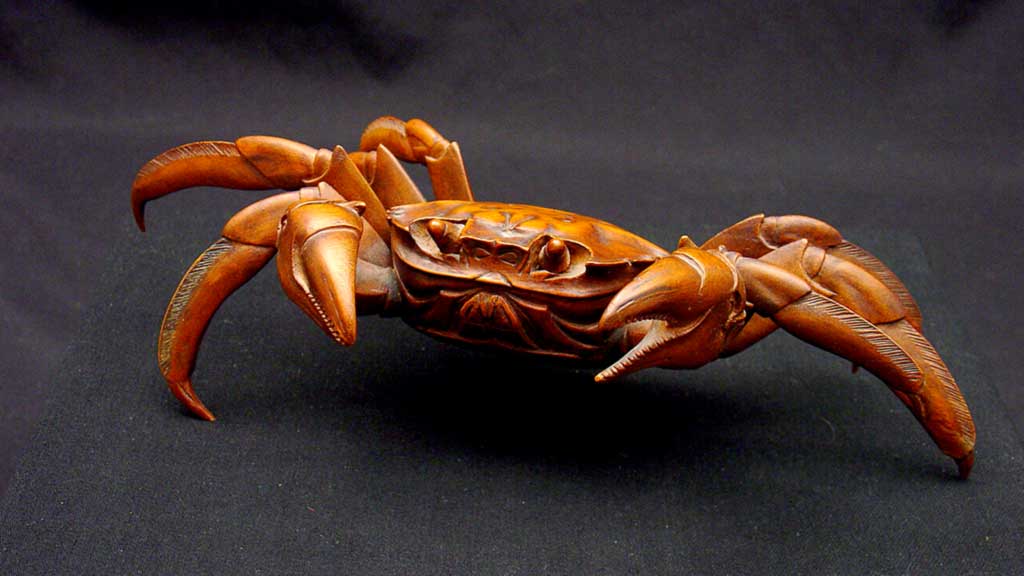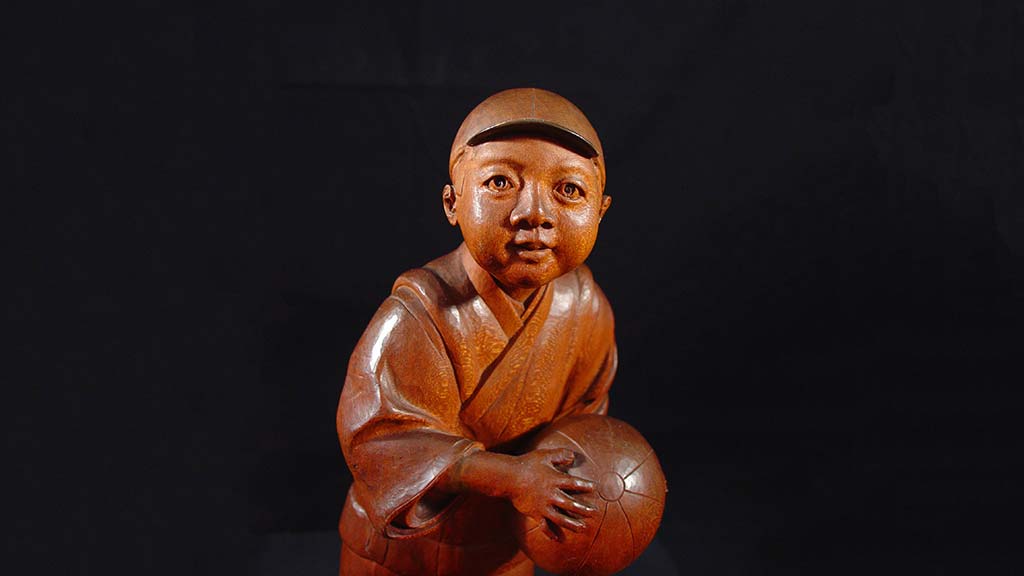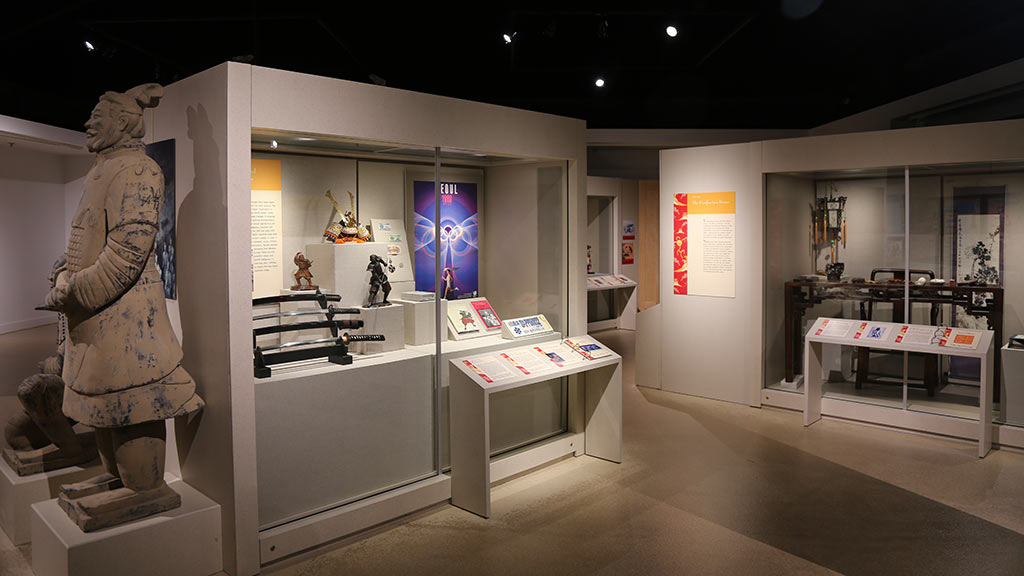
Fred A. Freund Collection of Chinese and Japanese Woodcarvings
Since 1999, Mr. Fred A. Freund has generously donated over 200 decorative carvings from 19th–20th century China and Japan. These pieces come in a variety of forms, from tools of the Chinese scholar to Japanese okimono and netsuke. Subjects range across human, animal, mythic, and abstract designs, and some pieces have been identified to specific artisans or workshops.
Chinese Carvings
Though the art of wood carving can be traced in China back to the Neolithic Age, our Chinese carvings date to the late Ming dynasty, Qing Dynasty, and early Republic of China (ca. 1600-1949). In addition to figures like deities, women, and everyday working people, the carvings represent the beauty imbued into functional items; the carvings of the scholar's desk include bitong or brush pots, brush rests in the shapes of mountains, and rectangular scroll weights.
Japanese Carvings
The Japanese carvings date to the Edo and Meiji periods (ca. 1700–1912) and include okimono and netsuke. As the traditional kimono has no pockets, pipes, seals, and other items that needed to be carried were suspended by a cord from the obi, a sash that holds a kimono closed. Netsuke are miniature carvings used as a counterweight on the other end of the cord. Okimono are decorative carvings larger than netsuke. Both styles of carving were popular collectibles with the opening of Japan to European and American trade in the late nineteenth century. In fact, the size of the okimono was inspired by Western collectors who wanted larger, freestanding artworks to put on display in their homes.
